
After more than two months at sea, Christopher Columbus reached what he believed was the edge of East Asia on October 12, 1492. In reality, he had arrived in the islands of the Caribbean, but at the time he thought he had discovered a new route to the riches of India and China. The voyage marked the beginning of sustained European exploration and colonization in the Americas, changing the course of world history.
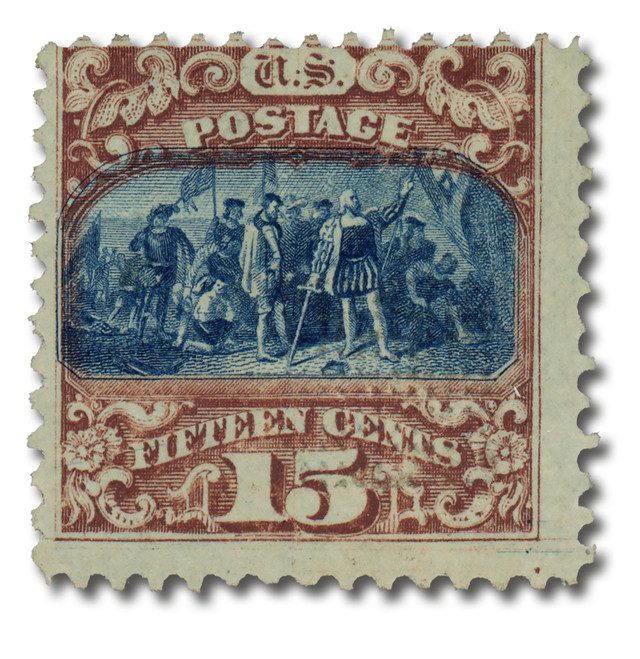
Christopher Columbus was born in 1451 in Genoa, Italy, and spent most of his early life as a sailor and navigator. From a young age, he was fascinated by maps and tales of exploration. At the time, European traders had to travel overland or around Africa to reach Asia’s valuable markets for silk, spices, and gold. Columbus became convinced that the Earth was smaller than most believed and that Asia could be reached more easily by sailing west across the Atlantic Ocean. His idea was bold and risky—no one knew how far the ocean extended, and there was no proof that land lay in between.
Columbus first presented his plan, which he called the “Enterprise to the Indies,” to King John II of Portugal in the 1480s. Portugal, however, was already focused on exploring the coast of Africa and rounding the Cape of Good Hope, and the king refused to support Columbus’s westward idea. Undeterred, Columbus turned to Spain’s monarchs, King Ferdinand and Queen Isabella, who also rejected his proposal several times. They were initially hesitant because Spain had just ended its costly war to drive the Moors from the Iberian Peninsula. But after years of persistence, Columbus finally convinced them that his plan could bring great wealth and spread Christianity to new lands. In April 1492, the Spanish crown agreed to fund his expedition, granting him three ships: the Niña, the Pinta, and the Santa María.

Columbus and his crews set sail from Palos, Spain, on August 3, 1492. They first stopped at the Canary Islands for supplies and repairs, then headed west into the unknown. The journey was longer than Columbus had predicted. As weeks passed and no land appeared, the men grew increasingly anxious and fearful that they might never see home again. To keep order, Columbus devised a clever trick—he kept two journals. In his private log, he recorded the true distances they traveled each day. In a second, more optimistic version that he shared with the crew, he wrote smaller distances, hoping to reassure them that they had not strayed too far from Spain.
Still, by October 10, frustration and fear nearly led to mutiny. The sailors demanded to turn back if they didn’t find land soon. Columbus promised that if they saw no sign of land within three days, they would return home. The tension eased when, on October 11, the crew began noticing encouraging signs—floating branches, carved wooden poles, and small birds that typically stayed close to shore. Late that night, Columbus himself saw a faint light flickering in the distance. He called one of his men to confirm it, but it soon disappeared. Still, Columbus was sure they were near land.

He offered a reward to the first sailor who spotted land, and at about 2:00 a.m. on October 12, Rodrigo de Triana, a lookout aboard the Pinta, shouted, “Tierra! Tierra!” (“Land! Land!”). At dawn, the crew saw a stretch of white sand and green vegetation ahead of them. Columbus ordered the ships to anchor offshore and waited until morning light to go ashore.
Later that day, Columbus and about 90 crewmen rowed to shore carrying the flag of Spain. As they stepped onto the island, Columbus knelt, said a prayer, and claimed the land for King Ferdinand and Queen Isabella. The people who lived there were the Lucayan Taíno, who called the island Guanahani. Columbus named it San Salvador, meaning “Holy Savior.” The two groups exchanged gifts—Columbus gave the islanders red caps, beads, and small trinkets, while the Lucayans offered parrots, cotton thread, and food. Though friendly at first, this encounter marked the beginning of centuries of European exploration, colonization, exploitation, and profound change for the indigenous peoples of the Americas.

Historians are still uncertain which island Columbus landed on, but most believe it was Watling Island in the Bahamas, which has since been renamed San Salvador Island in his honor. Over the next several months, Columbus explored parts of the Caribbean, including present-day Cuba and Hispaniola, still believing he had reached islands off the coast of Asia.
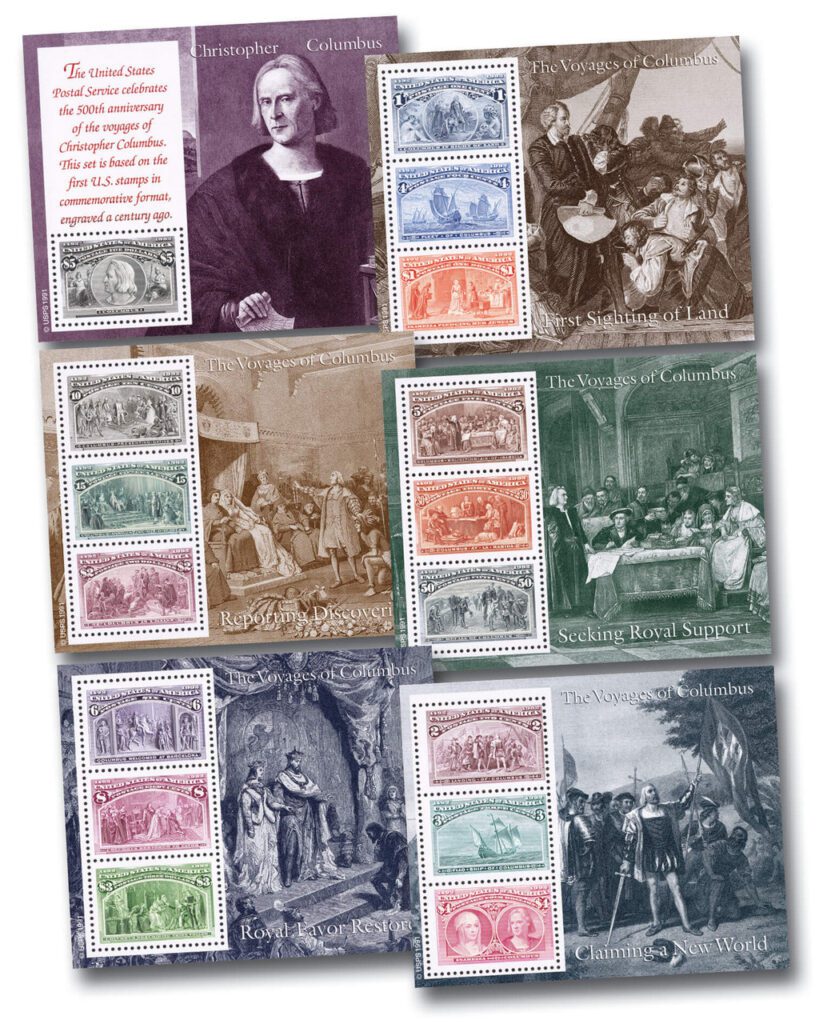
Columbus’s voyage had an enormous impact. It opened the way for the Age of Exploration, linking Europe and the Americas for the first time. Although Columbus never realized he had encountered a “New World,” his journey reshaped global trade, culture, and history. Three hundred years later, in 1792, the United States marked the anniversary of his landing with the first Columbus Day celebration, and in 1892, the holiday became official nationwide.
| FREE printable This Day in History album pages Download a PDF of today’s article. Get a binder or other supplies to create your This Day in History album. |
Click here for more Christopher Columbus stamps and click here for more Columbian singles, sets, covers, and more.
Discover what else happened on This Day in History.

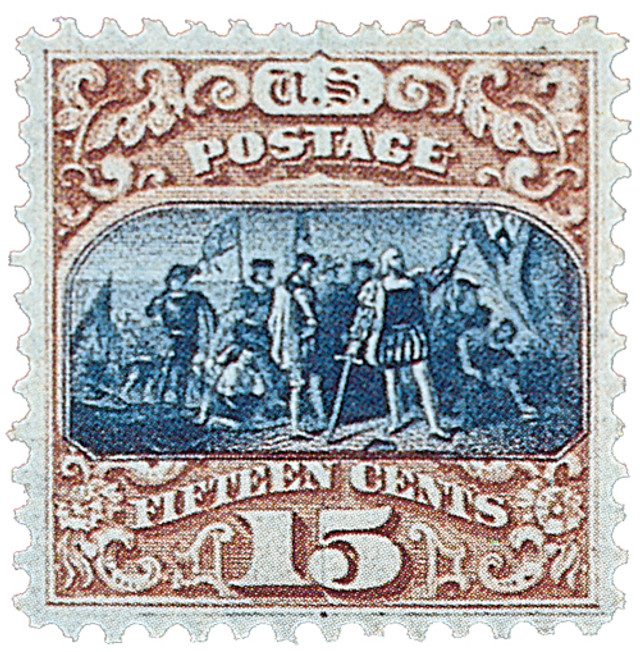
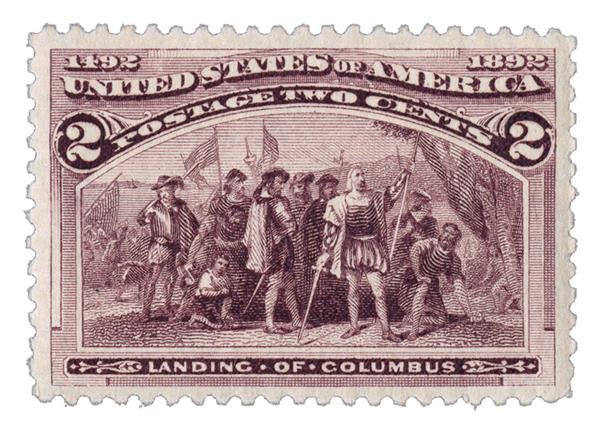
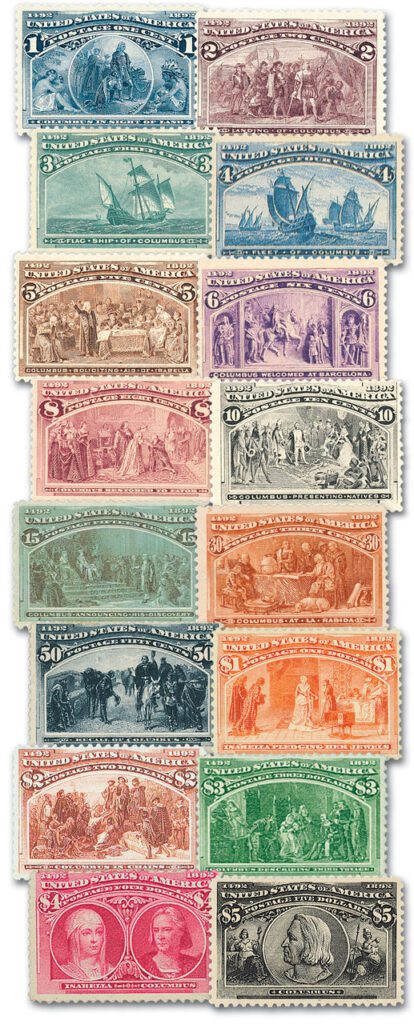
Love the early morning history lesson.
Watling Island???? I’ll have to look on a map. I thought he landed near Hispanola (now Haiti and the Dominican Republic). The stamp show is very beautiful as is the later Columbian issue. Though Columbus is not as revered for political reasons, he and his crew were truly courageous men. That was quite the bold voyage. And it was hurricane season!
Hurrah for Columbus but let’s not forget Leif Ericcson in 1002.
Let’s not forget Saint Brendan either.
Great informative reminders of history. Nice change from the daily news. Enjoy reading the variety of topics the stamps were created to represent. Keep up the much appreciated ‘day in history’ emails. Thank you.
Such a romanticized/sanitized historical summary. Let’s not forget that Columbus’ voyages of destruction led to genocide and slave trading in the Americas. It’s amazing this day maintains its celebrated status.
I agree!
I totally agree
Just remember the day celebrated is discovery of America. The sins of the Europeans after discovery is much like the story of the world. Hopefully we learn from those sins, but we are very slow learners.
Forgot to mention the Puerto Prison, where Chris baby recruited his crews. That Prison is still functional!!
Love this aspect of the hobby. Thinking of making it a part of my collection. Great idea. Keep it up.
Keep them coming. I enjoy them very much, great job.
https://www.mysticstamp.com/Products/United-States/2620-23/USA/ https://www.mysticstamp.com/Products/United-States/2616/USA/ https://www.mysticstamp.com/Products/United-States/2624-29/USA/
I found 1992 stamps 500 years (1492-1992)
I think most recognized holidays have been sanitized and romanticized. It would be good to have a more circular view and historical account of the good and the bad aspects being celebrated. People need to know and remember all of history, not just the happy feel good parts. Good points, James and Glenn. Good stamp information, Mystic. Thanks.
Thanks, Chris, the success of the new world started with you.
I agree with Glenn Minshell (above), but let us also not forget that Native Americans waged war and practiced ethnic cleansing long before the Europeans arrived in the Americas. The Incas and Aztecs didn’t build empires by singing Kumbaya. Columbus was no humanitarian or politician, but he was a great navigator.
Love this history lesson about Columbus and love the stamps
Love the pros and cons that eminate from this series. There is always room for debate and conjecture. keep them coming. What a great idea this was. Kudos to whomever thought of it.
To judge a historical event that happened more than 500 years ago with today ideas is nonsense..
Besides, our world is not totally civilized today….
You can’t judge Columbus by today’s standards. You have to judge him by the standards of his day. How will people judge us a hundred years from now. Or four hundreds years in the future.
He didn’t know that his men and others in the future would be carrying grems that the local population had no immunity to. Slaves, unfortunately, were a fact of life in 1492.
How about Sir Henry St Clair ?
The story that Columbus proved the world was round was invented by Washington Irving.
Happy to see at last someone comment in 2025. Hope to see more. Enjoyed once again reading about this discovery by Columbus. Lovely stamps to commemorate this.